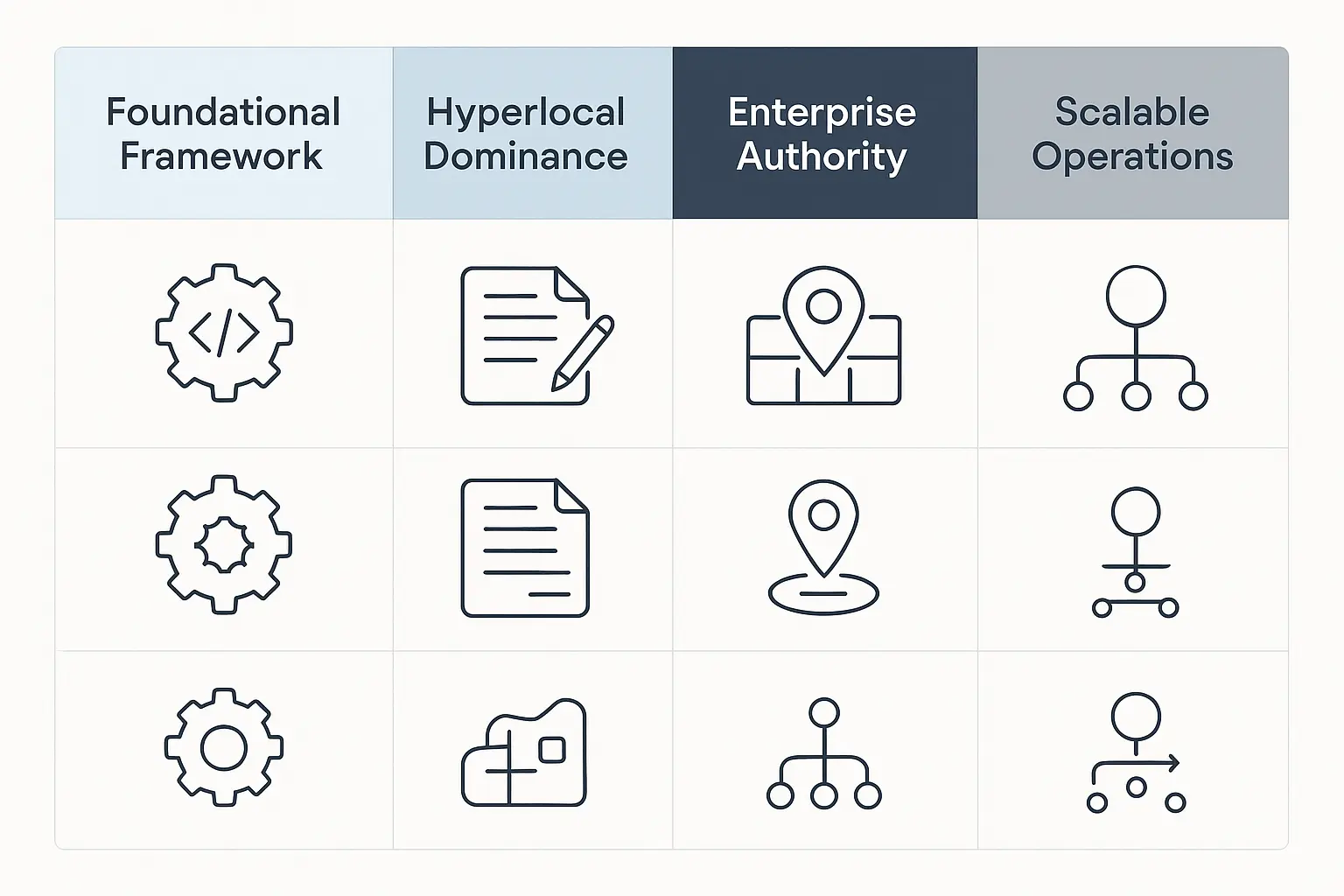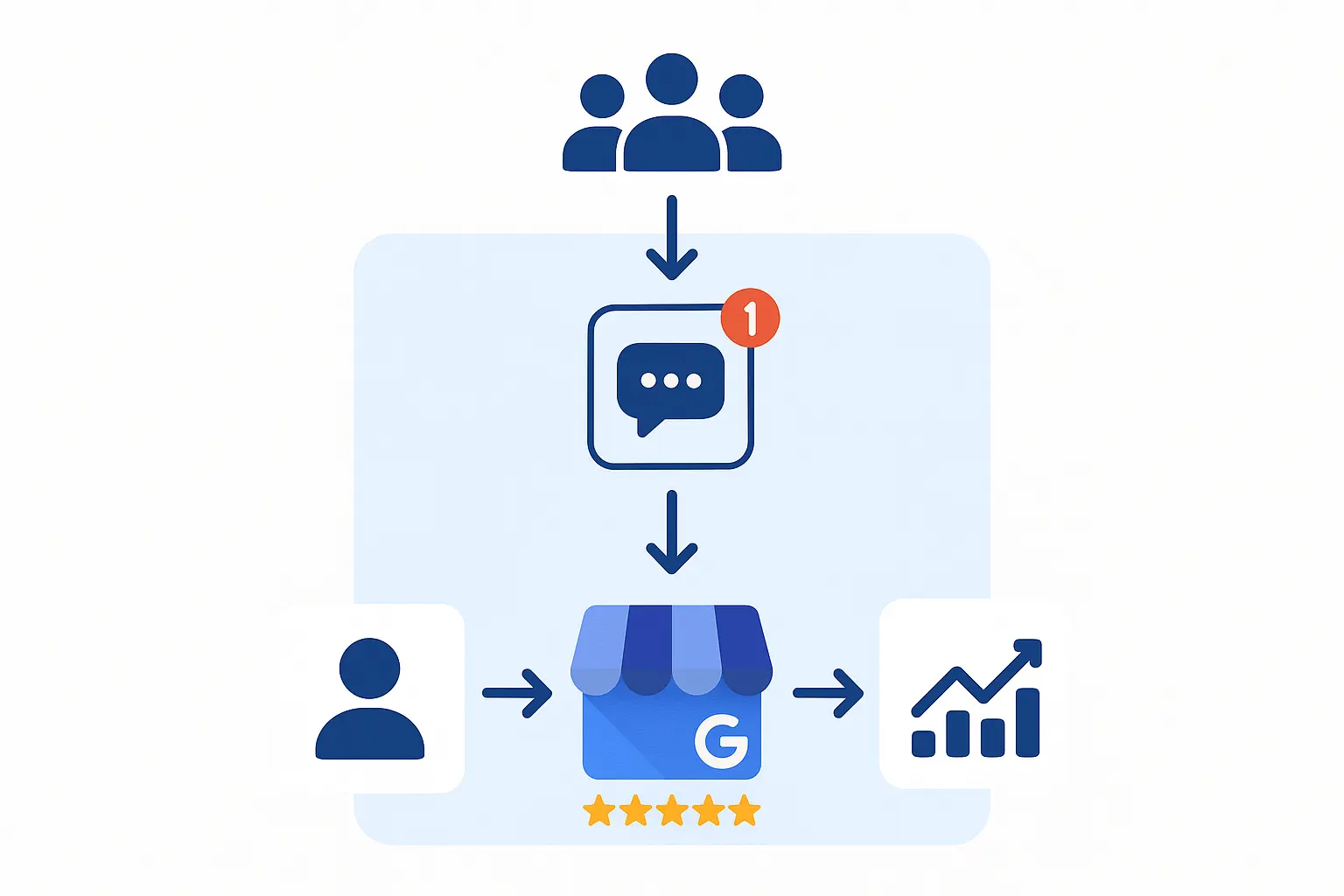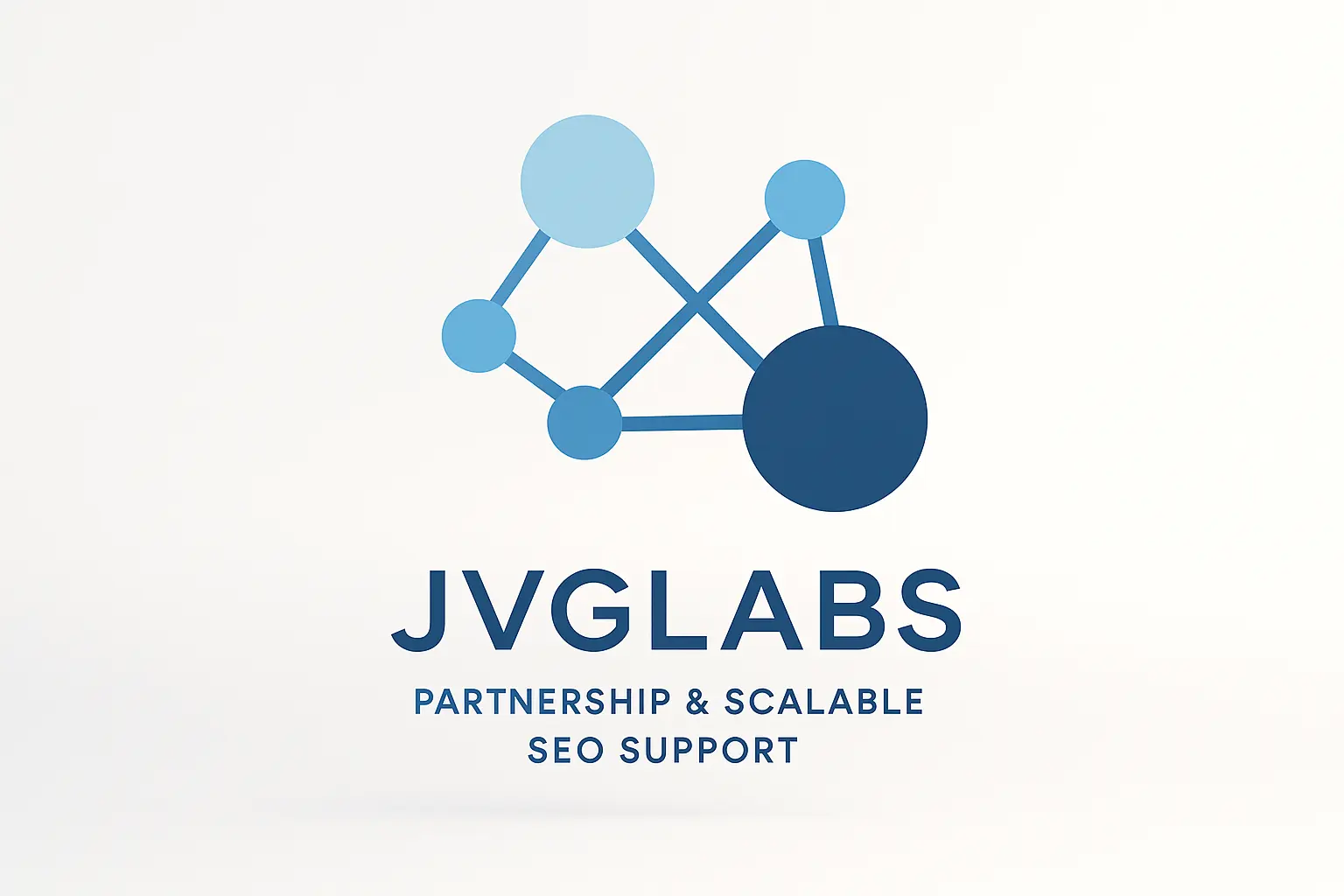You just landed a 50-location franchise account—the kind of client that can transform your agency’s trajectory. But once the initial celebration fades, a quiet panic sets in. How do you actually execute this?
Managing SEO for one or two locations is straightforward, but scaling that effort for 50, 100, or 500 is an entirely different discipline. It’s not just about doing more of the same; it’s a complex operational challenge where small inefficiencies multiply into massive resource drains.
The primary struggles for multi-location businesses are well-known: inconsistent NAP information, duplicate listings, and the sheer impossibility of creating unique local content at scale.
Most guides offer a simple tactical checklist. This isn’t a checklist. It’s a playbook—a strategic framework for building a scalable, profitable, and repeatable service that turns multi-location complexity into your agency’s competitive advantage.
Introducing the 4-Pillar Franchise SEO Playbook
To win with enterprise and franchise clients, you need to move beyond ad-hoc tactics and implement a cohesive system. This playbook is built on four interdependent pillars that address the entire lifecycle of multi-location SEO: technical architecture, content strategy, local authority, and—most critically—the operational workflows to manage it all without burning out your team.
Our 4-Pillar Franchise SEO Playbook simplifies complex multi-location strategy into an approachable framework that helps agencies win client buy-in. It’s a system you can present to clients to demonstrate competence, use internally to drive efficiency, and leverage with partners to prove ROI.
Pillar 1: The Unshakeable Foundation (Technical SEO at Scale)
Before you can build authority or create content, you need an architectural foundation that supports hundreds of locations without creating technical debt. The consensus is clear: a siloed approach using dedicated pages is the most effective way to scale.
The Definitive URL Structure
Avoid subdomains or separate microsites. The most effective structure consolidates authority on your client’s primary domain while creating clear, crawlable paths for each location. The gold standard is a subdirectory model:
domain.com/locations/city-state
This structure is intuitive for users and search engines, making it easy to manage, track, and scale as new locations are added.
The Perfect Location Page Template
Think of each location page as a mini-homepage for that specific branch. While the template is consistent, the content within must be unique. Your master template should include:
- NAP: Name, Address, and Phone number, prominently displayed and identical to the GBP listing.
- Embedded Google Map: For easy navigation.
- Unique Local Content: Local team bios, community involvement, location-specific services. (More on this in Pillar 2).
- Local Testimonials & Reviews: Social proof from local customers.
- Clear Call-to-Action: “Get Directions,” “Call This Location,” or “Book an Appointment Here.”
- LocalBusiness Schema: The critical final layer.

Deploying Schema Across Hundreds of Pages
Implementing LocalBusiness schema markup on every page tells Google exactly what each page is about, connecting your client’s digital presence to their physical one. Doing this manually is a non-starter.
The key is to use a dynamic system where a single schema template can be populated with data from a spreadsheet or database. This ensures consistency and allows you to update information across all locations with a single change.
Pillar 2: The Hyperlocal Content Engine
Here’s the single biggest challenge for most agencies: how do you create unique, valuable content for 100 near-identical service locations? The answer isn’t just to “write unique content”—it’s to create scalable content frameworks.
The payoff is enormous. A landmark study cited by BrightLocal, for instance, found that adding hyperlocal content to location pages can produce a 107% lift in rankings. This isn’t a “nice-to-have”; it’s a core driver of performance.
Instead of staring at a blank page, use these repeatable frameworks:
-
Meet the Local Manager: A short interview with the store manager or lead technician. It humanizes the brand and provides naturally local-centric keywords.
-
Community Spotlight: Feature a local event, charity, or partner. This demonstrates community involvement and creates powerful local signals.
-
Local Project Case Studies: Showcase a recent job or satisfied customer from that specific area. This builds trust and provides highly relevant, long-tail keyword opportunities.
By systemizing content creation this way, you turn a daunting task into a manageable, assembly-line process that delivers proven results.
Pillar 3: Building Enterprise Authority (GBP & Citations)
With your technical foundation solid and your content engine running, it’s time to build authority across every single location. This pillar focuses on Google Business Profile (GBP) and citation management at an enterprise level.
Managing 100+ Google Business Profiles
The key to sanity is using Google’s Location Groups. This allows you to organize multiple profiles into a single dashboard, making it possible to apply bulk updates, manage users, and monitor performance collectively. From here, you can execute a consistent strategy for posts, Q&A seeding, and service updates across all locations or targeted groups.
A Scalable Strategy for Reviews
Reviews are the lifeblood of local SEO. But managing them across a franchise network requires a clear, repeatable workflow. You need a system to generate, monitor, and respond to reviews efficiently while maintaining brand consistency.
A streamlined review lifecycle ensures consistent quality control and customer engagement across all franchise locations, turning valuable feedback into clear business insights. This structured process ensures no review is missed and transforms customer feedback into a powerful marketing asset for every single branch.

Pillar 4: Scalable Operations (The White-Label Agency Angle)
This is the pillar that separates successful agencies from overwhelmed ones. The first three pillars define what to do. This one defines how you can deliver it efficiently and profitably, especially when you don’t have a dedicated in-house local SEO army.
The right operational workflow transforms complex multi-location SEO into a reliable, efficient service delivery engine for your agency.
Automating the Grind
Success at scale depends on automating repetitive tasks. This isn’t about replacing strategy; it’s about freeing up your team to focus on strategy.
- Bulk Updates: Use tools and partners that can push updates to hundreds of GBP listings and citations at once.
- Review Monitoring: Set up automated alerts that route new reviews to the right person for a timely response.
- Automated Reporting: Generate reports that roll up data from all locations into a single executive dashboard, while also allowing franchise owners to see their individual performance.

Packaging and Reporting What Matters
Franchise CMOs don’t just buy SEO tactics; they buy business outcomes. Structure your proposal around their KPIs, not your checklist. Instead of “GBP Optimization,” talk about “Increasing Local Market Share.” Instead of “Citation Building,” focus on “Driving Qualified Foot Traffic.”
Focus your reports on the metrics that matter to the C-suite:
- Aggregate organic visibility across all territories.
- Lead and call volume per location, attributed to organic search.
- Trends in local SERP rankings for high-intent keywords.
- Year-over-year growth in foot traffic and phone-driven inquiries.
Conclusion: Executing the Playbook with a Partner
This four-pillar playbook provides the strategic framework to confidently land and serve multi-location and franchise clients. But having the playbook is only half the battle. Executing it at scale requires a dedicated team, specialized tools, and time-tested operational workflows.
For many agencies, building this capability in-house is too slow, too expensive, and too risky.
This is where a white-label partner becomes a strategic growth lever. By partnering with an expert execution team like JVGLABS, you can implement this entire playbook from day one. Your agency owns the client relationship and directs the strategy. We operate as your invisible, scalable SEO department in the background, handling the technical execution, content creation, GBP management, and reporting under your brand.
You get the credit for delivering enterprise-level results, your client sees measurable growth across all their locations, and your agency scales profitably—without the limits of hiring. A trusted partner empowers agencies to scale multi-location SEO services efficiently without building costly in-house teams, driving enterprise success.
Frequently Asked Questions
If we partner with a white-label provider, will we lose control over strategy and client communication?
Not at all. With a true white-label partner, your agency always owns the client relationship. You lead the strategy calls and present the reports. The partner acts as your execution engine in the background, providing the data and deliverables you need to lead with confidence. We remain completely invisible to your client.
How can we price multi-location SEO profitably when outsourcing the execution?
Profitability comes from focusing on your high-value work: strategy and client management. By partnering, you avoid the massive overhead costs of salaries, benefits, training, and specialized software for an in-house team. This allows you to build healthy margins while delivering a more sophisticated service than you could manage alone.
How do you maintain quality and consistency across hundreds of locations?
This is achieved through a combination of automation and expertise. Our AI-powered systems handle data analysis, monitoring, and reporting at scale, ensuring nothing is missed. That technology is paired with expert human strategists who oversee quality control, approve content, and ensure the overarching strategy is sound. It’s the only way to deliver both scale and quality.
How complex is it to onboard a new franchise client with a partner?
A good partner should make it seamless. Our process is designed specifically for agencies. We provide you with a clear onboarding checklist, integrate with your existing project management systems, and establish a simple communication channel. Our goal is to get your client’s campaign launched quickly with minimal disruption to your workflow.


